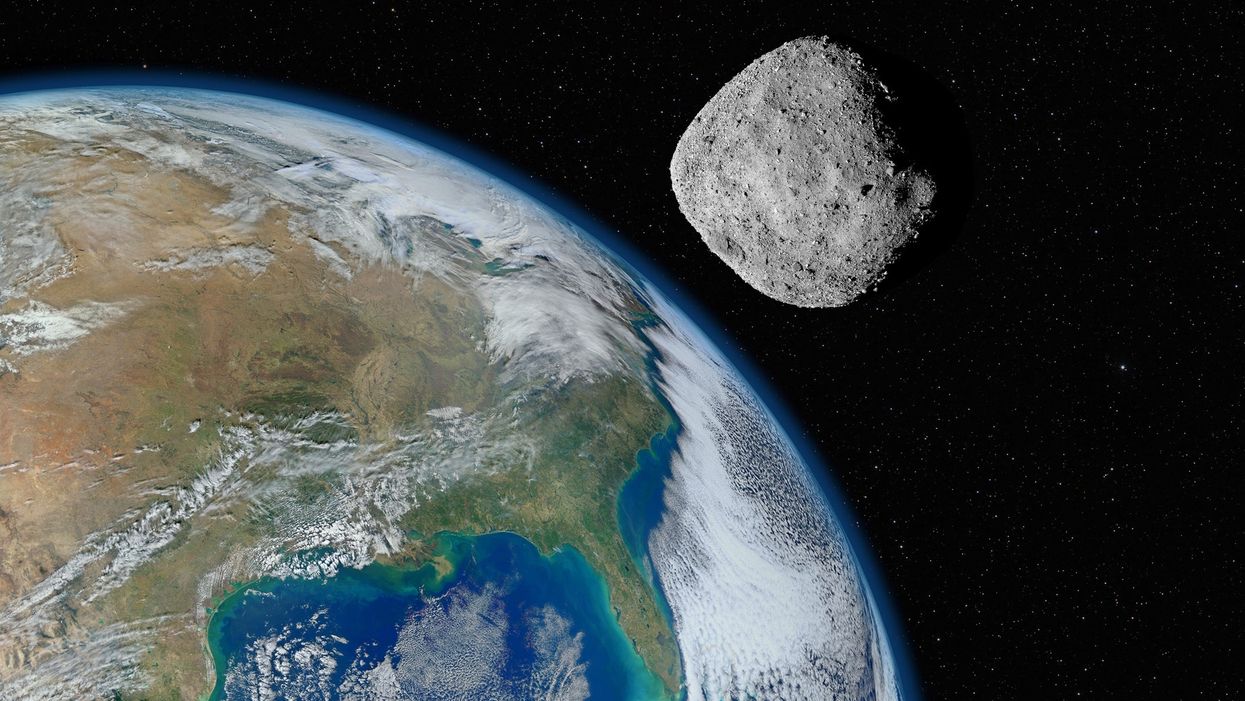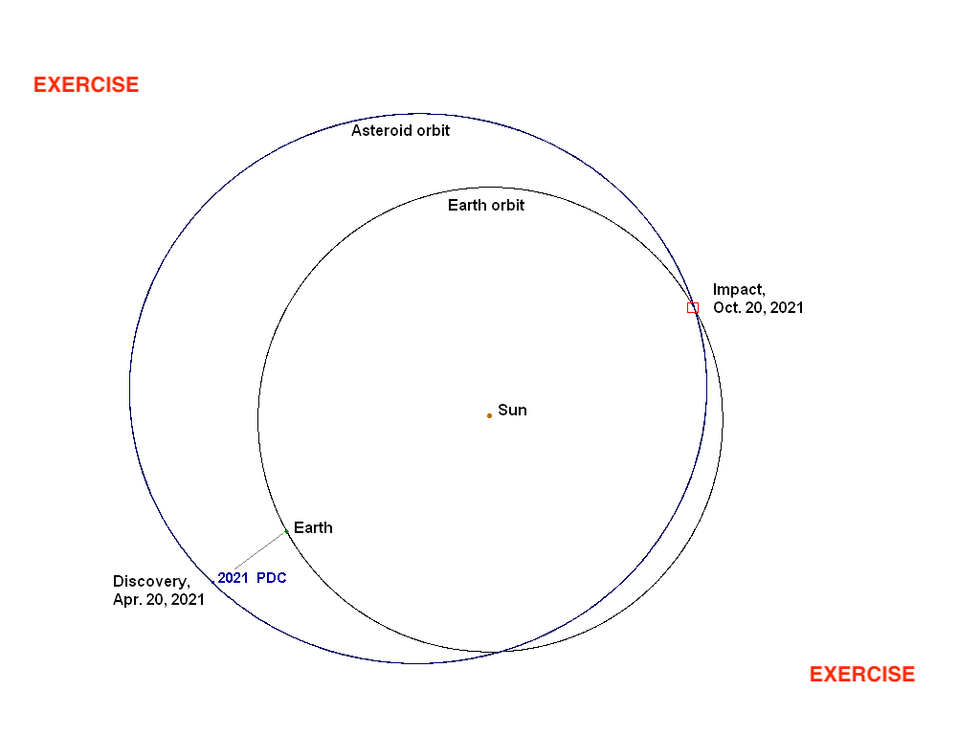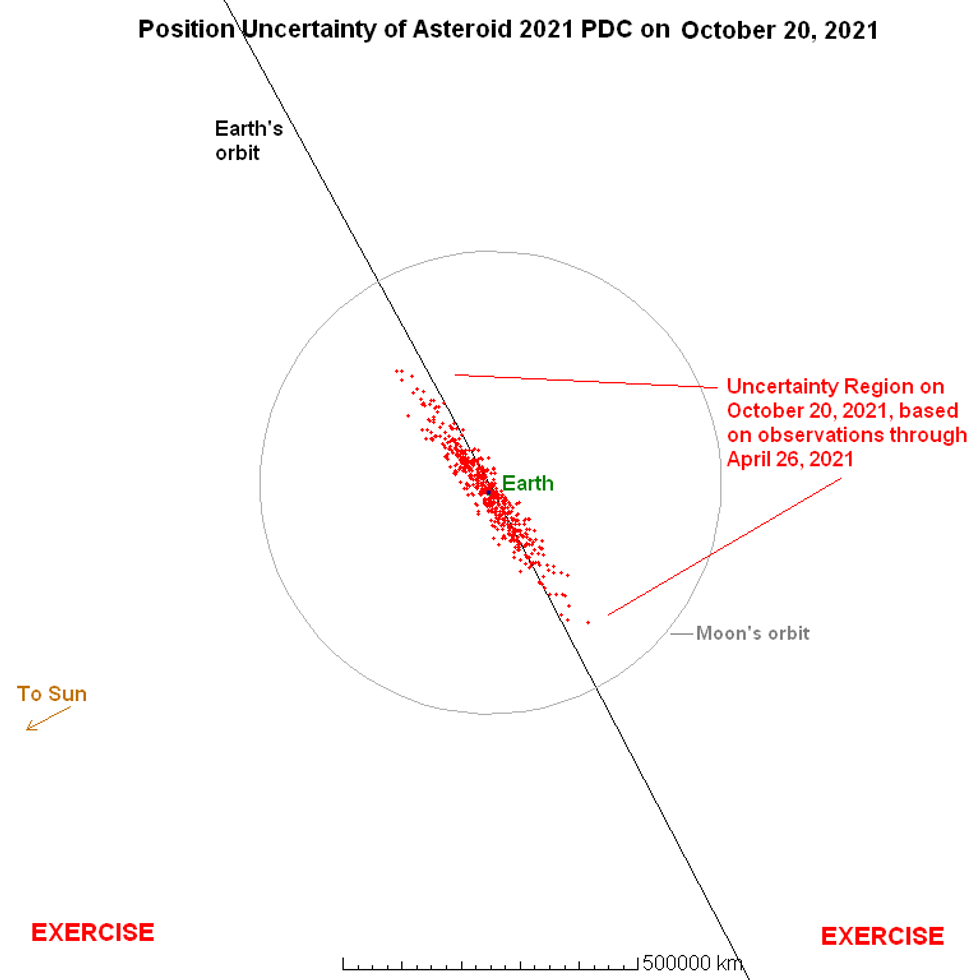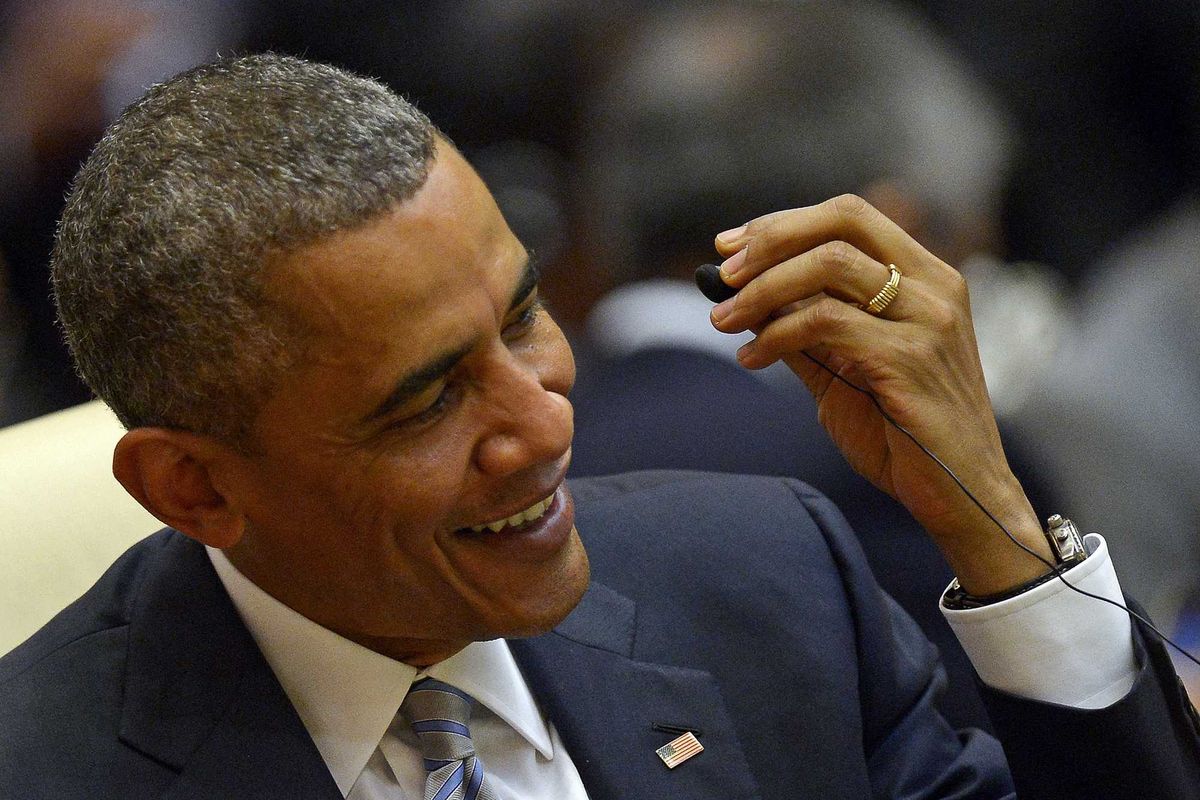
Over the weekend, NASA scientists at the International Academy of Astronautics’ Planetary Defense Conference, gathered virtually to war-game how they’d deal with incoming asteroids.
And in this hypothetical scenario, a giant asteroid spotted months in advance eventually slammed into Earth.
Not ideal.
The conference occurs every two years, featuring scientists and emergency response personnel gathering to discuss various imaginary asteroid threats to Earth.
Due to Covid-19 safety measures, this year’s conference took place online, from from April 26 to April 28. Dubbed 2021 PDC, one of the hypothetical astroids was devised by the Center for Near-Earth Object Studies (CNEOS) at NASA’s Jet Propulsion Laboratory, measuring anywhere from 35 meters (100 feet) to 700 meters (2,000 feet) wide.
That’s anywhere from about half the wingspan of a 747 airplane, to twice the height of the Empire State Building.
It supposedly had a one-in-20 chance of impacting Earth around October 20 of this year.
But even six months is too-short a timeframe to knock an earth-threatening asteroid off-course with space-crafts or nuclear blasts.
“One of the objectives of this exercise is to get the disaster management and emergency response community more involved and thinking about what they would be facing if we didn’t have the time to divert an asteroid in space, and did have to take the impact somewhere,” Lindley Johnson, NASA’s Planetary Defense Officer said.
The exercise isn’t just about considering ways to knock asteroids off course, it’s also an opportunity to figure out evacuation plans for areas which may be in the strike zone of a deadly space object.
As a preventative measure, experts identify as many objects as possible, precisely tracking their orbits and understanding their size. Scientists have confirmed most near-Earth asteroids and comets identified — more than 25,000 to date — pose no threat.
Read mores:
- Ben Affleck sent a video to a woman after she unmatched him on dating app assuming his profile was a catfish
- Woman wearing bikini at a Hawaii beach told to leave beach by angry mother
- Man who claims he is Charles and Camilla’s son shares new photographic ‘evidence’
- Ted Cruz mocked after praising Jason Bourne as the pinnacle of the CIA
- Billie Eilish fans defend singer after her Vogue cover sparks debate about her body
However, an asteroid large in size and with a high likelihood to hit Earth makes defense experts uneasy - and spotting it early (like, many many months early) could make the difference between knocking it off course, and enduring its impact.
But if it can’t be avoided, it gives plenty of time to prepare the potential collision site - although even that would entail a lot of uncertainty.
“In view of the dramatic, drastic consequences of an impact, I think there would be a demand ... ‘Why can’t we be certain if it’s going to hit or if it’s not going to hit?’” says Paul Chodas, manager at NASA’s NEO Program Office. “This period of uncertainty will cause perhaps a lot of distrust, frankly, of the technical experts as we tried to explain our level of uncertainty and the fact that we’d be doing our best to try to figure out whether it’s going to hit or not.”














